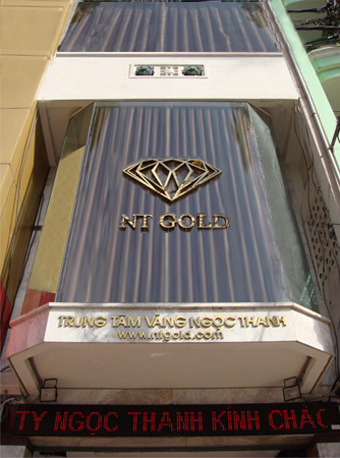The Reserve Bank of Australia saw no “strong need” based on the domestic outlook to lower interest rates Dec. 6, when it reduced borrowing costs because of a “a non-trivial possibility of a very sharp contraction” in Europe, according to minutes of the meeting released today.
The Australian dollar advanced as the central bank said “solid growth” among trading partners is supporting an expansion in the only Group of 10 nation to avoid the 2009 worldwide recession. Companies including BHP Billiton Ltd. (BHP) are developing resource projects to meet demand for iron ore, coal and gas from China, the world’s second biggest economy and Australia’s biggest trading partner.
“The December cut was the RBA’s insurance policy,” said Paul Brennan, a senior economist at Citigroup Inc. in Sydney. “The minutes show that the decision to cut interest rates was not taken lightly. Instead, there appears to have been some deliberation about the need to cut rates at all.”
Traders pared bets on the chances of a 50 basis-point reduction at the next meeting in February to 36 percent after the release from 42 percent yesterday, interbank cash-rate futures showed. Australia’s three-year government bond yield rose 2 basis points to 3.01 percent as of 2 p.m. in Sydney.
Dollar Gains
The Australian dollar held advances, trading at 99.23 U.S. cents at 2 p.m. from 98.96 cents yesterday in New York.
RBA Governor Glenn Stevens and his board reduced rates by a quarter percentage point on Nov. 1 and again this month to 4.25 percent. Australia is headed for its worst annual jobs growth in 15 years and the unemployment rate advanced last month to 5.3 percent, matching the highest level this year.
Policy makers said the case this month for lowering borrowing costs revolved around the “downside risks” posed by Europe to the global economy, the minutes showed. “The risks had, if anything, increased though the timing and magnitude of any effects that might flow from them remained very difficult to predict,” the said.
“Liaison had indicated significant caution in hiring intentions, with firms waiting for evidence of growth in demand before looking to increase staff levels,” policy makers said in today’s minutes, referring to the domestic economy. Most companies “expected wage pressures to remain contained,” they said.
Mining Boom
Resource projects in Australia valued at A$456 billion ($453 billion), fueled by companies such as BHP Billiton, have cushioned a slump in manufacturing and services hit by a record currency and subdued consumer spending. The Aussie reached $1.1081 on July 27, the most since it was freely floated in 1983.
Europe’s fiscal turmoil is cutting demand in China’s biggest export market, and a Chinese government campaign to rein in property prices is threatening home sales and construction. China’s economic growth cooled to 9.1 percent last quarter, the least in more than two years, and an increase in exports in November was the weakest since 2009 excluding seasonal distortions.
“The poor outcomes in Europe were weighing on Asian exports, and growth in domestic demand had moderated somewhat,” the minutes said.
EU Turmoil
Europe’s troubles have weighed on the so-called Aussie dollar in recent weeks. The world’s fifth most-traded currency has fallen about 10 percent since its July peak on concern Greece would default and trigger a repeat of the credit freeze that followed the 2008 collapse of Lehman Brothers Holdings Inc. increase economists estimated.
In the minutes, the RBA noted “no signs of strain in local money markets through November and banks had also been able to access short-term offshore markets with relative ease.”
Payrolls in Australia gained 44,700 through the first 11 months of this year, heading for the smallest annual growth since 1996 after a record 362,300 increase in 2010, government data showed this month. The report contrasted with figures showing the biggest six-month gain in economic growth since March 2007.
“Given the expectation that inflation would be consistent with the target over the next couple of years, members felt that there was scope for a modest reduction in the cash rate,” the minutes showed. The central bank aimed to keep domestic inflation in a range of 2 percent to 3 percent.
A day after the policy meeting, a government report showed Australia’s economy grew faster than estimated last quarter on consumer spending and mining-driven investment. Gross domestic product rose 1 percent in the three months ended Sept. 30, after growing a revised 1.4 percent the prior quarter, the fastest pace in four years, a Bureau of Statistics report released in Sydney this month said.
To contact the reporter on this story: Michael Heath in Sydney at mheath1@bloomberg.net
To contact the editor responsible for this story: Stephanie Phang at sphang@bloomberg.net
| TIME | |||||
|---|---|---|---|---|---|
| Sydney | Tokyo | Ha Noi | HongKong | LonDon | NewYork |
| Prices By NTGOLD | ||
|---|---|---|
| We Sell | We Buy | |
| 37.5g ABC Luong Bar | ||
| 8,095.30 | 7,385.30 | |
| 1oz ABC Bullion Cast Bar | ||
| 6,779.50 | 6,089.50 | |
| 100g ABC Bullion Bar | ||
| 21,563.80 | 19,563.80 | |
| 1kg ABC Bullion Silver | ||
| 3,208.60 | 2,608.60 | |
Powered by: Ngoc Thanh NTGold
- Online: 161
- Today: 1243
- Total: 6540479














